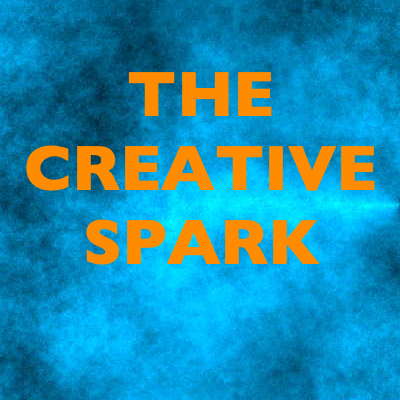 VIDEO PODCAST: John Dante Prevedini leads a discussion about The Creative Spark, including contributions from Ryan Ash, Sean Neukom, Adrian Rumson, Stephen Francis Vasta, David Arditti, Halida Dinova and Andrew Arceci.
VIDEO PODCAST: John Dante Prevedini leads a discussion about The Creative Spark, including contributions from Ryan Ash, Sean Neukom, Adrian Rumson, Stephen Francis Vasta, David Arditti, Halida Dinova and Andrew Arceci.
- Dimler
- Arif Melikov
- Serge Koussevitzky
- Akiko Ohtomo
- Antônio Carlos Gomes
- Hazelwood Trio
- Paul Brantley
- Manchester University
 DISCUSSION: John Dante Prevedini leads a discussion about Improvisation in the classical world and beyond, including contributions from David Arditti, James Lewitzke, James Ross and Steve Vasta.
DISCUSSION: John Dante Prevedini leads a discussion about Improvisation in the classical world and beyond, including contributions from David Arditti, James Lewitzke, James Ross and Steve Vasta.
Enthralling Sound Colours
MALCOLM MILLER listens to young violinist Michael Foyle's recital of Beethoven, Brahms and Kreisler in London
Expressive tone, sense of colour and shading and involvement in the heart of the music are some of the qualities displayed by the young, outstanding violinist Michael Foyle, in a superb recital on Friday 9 April 2021 at St James Piccadilly, partnered excellently by Julian Jacobson. The concert inaugurated the series presented by the Beethoven Piano Society of Europe, which runs through the summer. Originally scheduled to be live, the concerts are currently 'livestreamed' at least until audiences are permitted. Happily they are available to be viewed via St James' Piccadilly's YouTube channel, and the BPSE's website (bpse.org)

Michael Foyle
Julian Jacobson, the BPSE's Chairman, introduced the event with words of respect to HM The Queen, at the sad news of the passing of HRH Prince Philip, Duke of Edinburgh. The programme of sonatas by Beethoven and Brahms seemed to convey a sense of spiritual reflection aptly responsive to the day's events, the music harmonising with sentiments evoked in tributes to HRH Prince Philip, creative inspiration and energy, humanity, and the ideal of partnership towards a common cause. Indeed, Foyle and Jacobson's chamber music interactions were always responsive to the other, allowing the nuanced dialogues, contrasts and interplay to emerge with intensity and effect.

Julian Jacobson. Photo © 2019 Jeremy Cook
The concert was launched with Beethoven's Violin Sonata in A, Op 30/1 the duo propelling the first movement with impressive structural clarity and sweep, the turn motif subject to myriad variants, and riveting rhythmic dynamism throughout. The expressive heart of the sonata was the slow movement, 'Adagio molto espressivo', the 'molto' emphasised in a measured, contemplative reading. The enthralling sound colours, always enabling space to the unexpected harmonic shifts, were especially expressive in the middle section, its nostalgic, nocturne-like textures, with eloquent dovetailed exchanges between piano and violin. One could savour the poise of the dotted rhythms of the opening, and their transformation to lilting triplet delicacy in the reprise, those supple rhythmic contrasts maintained until the final tranquil return of the patterns. The variation finale was projected with vivid contrasts and ebullience, especially in the virtuoso first and third variations, a virtual left hand piano study overlaid with syncopated imitations, whilst there was wit in the characterful registral contrasts of the fourth variation. Especially evocative was the transition from the sinewy minor mode fifth variation to the final variation, in a new rhythmic character, and in which Beethoven ingeniously takes us to the remote key just before the final flourish.
In Brahms' D minor Sonata Foyle's interpretative finesse and depth came to the fore, the sheer beauty of tone emanating from his always rich yet controlled vibrato. Together with Jacobson's forthright pianism the duo brought out the varied moods and shades of the work, from the autumnal first movement, to the devotional slow movement, the piquant delicacy of the scherzo and the drama of the finale. Foyle's delicate pastel shading of the opening theme was immediately engaging, while Jacobson brought richness to the more heroically expansive second subject, over flowing arpeggios, imitated by Foyle in the silvery upper range; the ebb and flow and rise towards climaxes outlined a ravishing narrative, directed to an eloquent subdued mystery in the final chromatically sequential section. In the hymn like slow movement theme, there was both breadth and introspection, a broadening to the double stopped chordal reprise, underpinned by an entrancing sense of stillness. If the third movement started slowly it regained just the right mercurial delicacy, enhanced by Foyle's pizzicato, in its repeat, the central section unfolding with flowing waves of intensity. The flying energy of the finale drew out Brahms' deep, dark shading, at the start dramatically countered by the radiance of the violin's higher melodic lines, as in the repeat of the piano's majestic chordal theme, echoed by the violin. The duo infused Brahms' characteristic hemiola rhythms with impetus, adding to their dramatic interplay gritty energy, as in the unison passagework that preceded the exuberant coda.
A rewarding encore added a welcome cherry to an already delicious cake, in the form of a transcription of a Brahms Hungarian Dance by Fritz Kreisler, rendered by Foyle and Jacobson with appealing élan and almost orchestral colour, the violin's tonal richness reminiscent at times of the great violinist himself.
Copyright © 10 April 2021
Malcolm Miller,
London UK

BEETHOVEN PIANO SOCIETY OF EUROPE


